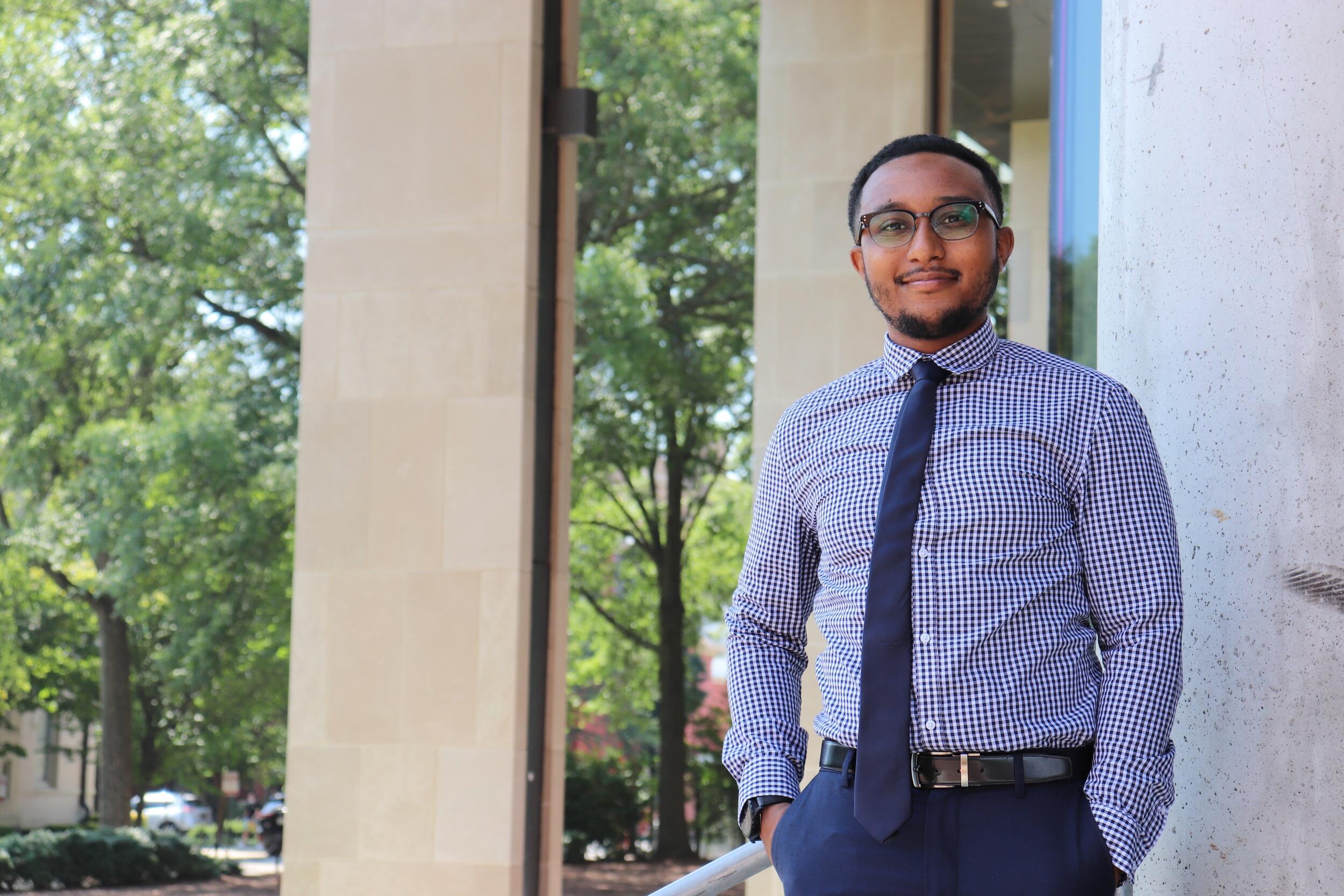
Feb. 19, 2024
In Feb. 24 address, VCU history professor will highlight early America’s urban slavery in human terms
Share this story
Years ago, Virginia Commonwealth University history professor Michael Dickinson was conducting research in Philadelphia when he came across the narrative of Jeffrey Brace, an enslaved man and Revolutionary War veteran who arrived in the Americas aboard a slave ship from West Africa in the 1750s.
Brace’s story was one of many testimonies that inspired Dickinson, Ph.D., a professor in VCU’s Department of History in the College of Humanities and Sciences, to write “Almost Dead: Slavery and Social Rebirth in the Black Urban Atlantic, 1680-1807.”
On Feb. 24, Dickinson will give a public talk at Richmond’s historic St. John’s Church based on his book, which was published in 2022. He worked on the project as part of a Barra Sabbatical Fellowship at the McNeil Center for Early American Studies, based at the University of Pennsylvania.
“My talk will examine what it means to resist and survive the institution of slavery in early America through the perspectives of enslaved people,” Dickinson said.
He spoke with VCU News about his book project and the upcoming address.
Can you talk about your research related to “Almost Dead”?
I found enslaved experiences in expansive urban networks to be generally understudied, so I set out to investigate these commercial networks connecting Caribbean port cities with ports in mainland Anglo-America. While in the archives, I stumbled upon Jeffrey Brace’s narrative, and the project took a more human turn from there. The central question that I wanted to explore in the project became, “How did people of African descent survive in the urban Atlantic?”
Traveling to archives across the globe was one of the genuine pleasures of writing the book. These were very diverse settings, which made the work all the more rewarding and forced me to grow as a researcher in terms of versatility. Every repository poses some sort of challenge, which makes the work both rigorous and gratifying.
Most archives I visited in the Caribbean, for instance, do not have digital catalogs as opposed to, say, the British National Archives, which has what can be an overwhelmingly detailed catalog. Regardless of such variables, I found the most important asset throughout all of the archives that I visited was the archival staff. Archivists throughout the world are the unsung heroes of historical scholarship, my book included. These experts helped me immensely in navigating and locating sources vital to the project as I confronted the unique challenges that each archive posed.
I should also mention that traveling for research was influential to my work outside of the archives as well. For instance, matching the historical layouts of maps with physically walking the streets of various cities was extremely useful in visualizing and analyzing the spatial movement and opportunities for urban enslaved people.
Did you find anything during your research that surprised you?
Certainly. For those who have not read the book, it ends with an epilogue featuring interviews with two of Brace’s descendants, Rhonda and Shawna Brace. I use these interviews to explore the afterlives of slavery and ask questions: What is the lasting impact of the Brace narrative and narratives like it? What do they tell us about humanity amidst oppression and the legacy of oppression (remembering that oppression rarely disappears entirely but more often merely changes form)?
At a time when there are efforts around the globe to reckon with the legacies of slavery along with efforts to ignore histories of bondage, my work seeks to remind us of the humanity of those enslaved — that these were people, not talking points or inconvenient truths.
I believe that the Brace family itself has shown the considerable value of reckoning with the legacies of slavery. The family has contacted and met with descendants of individuals tied to Jeffrey Brace, including former slaveholders, with considerable success. Their efforts testified to the cathartic power of acknowledging and addressing historical wounds in order to heal. This is challenging work, indeed, but the recent experiences of the Brace family show us the potential value of this very important work individually and societally.
What do you hope attendees will take away from your upcoming address?
We often think of slavery in terms of labor, but this project pushed me to envision slavery in terms of emotive, human experience, which is immensely powerful and meaningful. Therefore, I want audience members and readers to take away a better understanding of the spectrum of human emotion that bondspeople traversed throughout their captivity while also appreciating the precariousness and anguish of urban enslavement.
Furthermore, I want them to see and comprehend the constant efforts of captives to endure, resist and rebuild families, communities and cultures — to see enslaved people and the cities that they inhabited as multivalent and multidimensional. Simply put, I want to remind attendees and readers of the humanity of those enslaved.
Subscribe to VCU News
Subscribe to VCU News at newsletter.vcu.edu and receive a selection of stories, videos, photos, news clips and event listings in your inbox.







